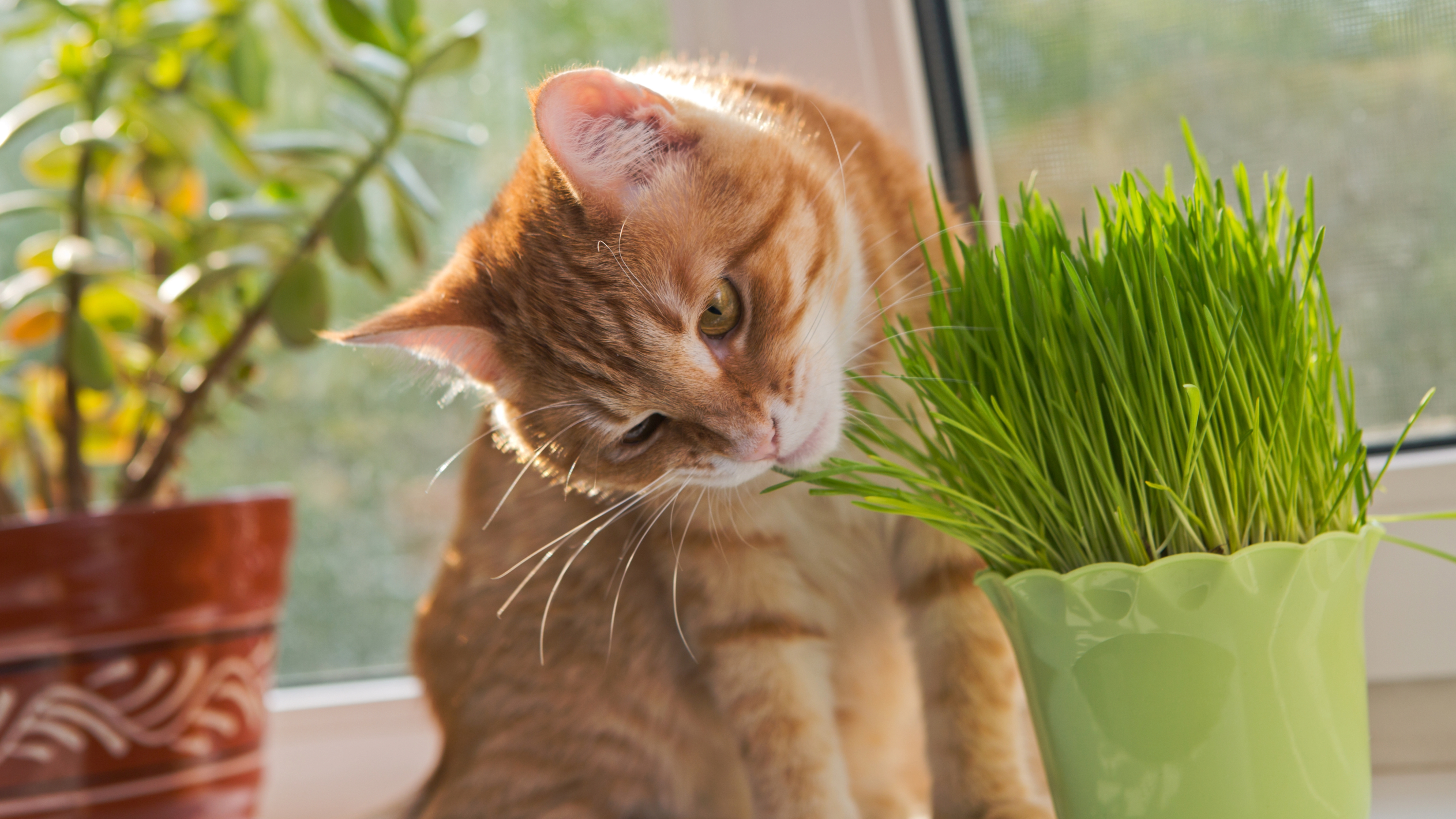Diabetes in cats: A vet’s guide
With proactive treatment, you and your veterinarian can work together to manage diabetes in cats.

Diabetes in cats is a relatively common condition, affecting nearly 1% of cats at some point in their lives. Even with the best pet insurance, diabetes can be tricky to diagnose and challenging to manage. Some cats go into diabetic remission with prompt and effective treatment, but most cats require lifelong management.
The good news is that most diabetic cats go on to live long and healthy lives, especially if you diagnose the condition early and follow your veterinarian’s treatment recommendations. Left untreated, however, diabetes can lead to serious complications including starvation, diabetic ketoacidosis, and even death.
What causes diabetes in cats?
Diabetes is a disorder of blood glucose (sugar) regulation. Cats with diabetes experience prolonged periods of hyperglycemia (high blood glucose), causing the clinical signs and negative consequences that we associate with this condition.
In a healthy cat, blood glucose levels are regulated by insulin, a hormone produced by the pancreas. When blood glucose levels are high, the pancreas releases insulin. The body’s cells respond to insulin release by moving glucose from the blood into the cells, lowering the cat’s blood glucose level.
In a cat with diabetes, there is not enough insulin to trigger the movement of glucose into cells. Therefore, a diabetic cat has persistently high blood sugar levels. Meanwhile, the cells are literally being starved of nutrition.
If you’re familiar with diabetes in humans, you have likely heard of the distinction between Type I and Type II diabetes. Type I diabetes occurs when the pancreas cannot produce enough insulin. Type II diabetes, in contrast, is caused by insulin resistance, or the body’s failure to respond to insulin. Diabetic cats typically have Type II diabetes. Their body is producing insulin, but their cells have become resistant to insulin’s effects. Risk factors for Type II diabetes in cats include obesity, lack of physical activity, age, and the use of steroids (such as prednisone).
In contrast, dogs develop Type I diabetes. Diabetes in dogs is caused by insufficient insulin production within the pancreas.
What are the symptoms of diabetes in a cat?
The most common signs of diabetes are increased thirst, increased urination, and weight loss despite a ravenous appetite. Owners often notice their cat drinking a lot of water, or that their cat’s not eating, or the cat losing weight.
As a cat’s diabetes becomes more advanced, more pronounced signs of illness may develop. Cats may develop weakness in the hind end, a condition known as diabetic neuropathy. In some cases, cats may become very ill with a metabolic condition known diabetic ketoacidosis. This condition is associated with vomiting, diarrhea, lack of appetite, lethargy, and death.
How to test for diabetes in cats
If you or your veterinarian suspect your cat may have diabetes, it’s important to begin with a thorough physical exam. Your veterinarian will closely evaluate your cat, looking for evidence of other medical conditions that could be mistaken for diabetes.
Next, your veterinarian will recommend laboratory tests, including a complete blood cell count (CBC), serum biochemistry profile, and urinalysis. These tests can help rule out other conditions that may be mistaken for diabetes, such as hyperthyroidism, kidney failure in cats, and pancreatitis in cats.
An elevated blood glucose level and the presence of glucose in the urine suggest the possibility of diabetes. However, additional confirmatory testing, such as a fructosamine test, may be required. Some cats develop high blood sugar when stressed (stress hyperglycemia), so it’s important to ensure that the hyperglycemia is significant before beginning treatment.

How to treat diabetes in a cat
The goal of diabetes treatment is to stabilize your cat’s blood glucose levels. Your veterinarian will strive to prevent the clinical signs and potential complications of diabetes, while also minimizing the risk of life-threatening hypoglycemia (low blood glucose).
Diabetic cats should be fed a low-carbohydrate diet. Prescription diets are often the best option, although some over-the-counter diets can also be beneficial. Talk to your veterinarian about the best diet for your diabetic cat. Feeding consistent quantities of a low-carbohydrate diet is a mainstay of feline diabetes treatment.
Insulin injections are also an important component of diabetes treatment. Your cat will likely require twice-daily insulin injections for the rest of their life. While some cats go into diabetic remission with treatment, many cats require lifelong care. There are a variety of insulins available for use in cats; your veterinarian will select the best insulin for your cat based on efficacy, availability, your budget, and other factors.
Your veterinarian will also work with you to treat any concurrent infections that your cat may have. Cats with diabetes are more susceptible to infections, such as dental disease and urinary tract infections. These infections can make diabetes significantly more difficult to regulate. Detecting and treating secondary infections is a vital component of diabetes management.
During the early stages of treatment, your cat will need regular glucose monitoring to fine-tune their insulin dosing. This monitoring typically involves all-day glucose curves performed in the veterinary hospital, but your veterinarian may be able to offer options for at-home monitoring. Recheck veterinary visits and insulin adjustments are common in the early stages of diabetes treatment, and this early stage of diabetes management can be relatively costly and time-consuming. Once your cat’s optimal insulin dosage has been found, however, the frequency of your cat’s veterinary visits may decrease to as little as once every three months.
Summary
Diabetes in cats is a relatively common cause of increased thirst/urination and weight loss in older cats. If your cat has signs of diabetes, talk to your veterinarian about testing for this condition. An early diagnosis can improve your cat’s outcomes and improve the likelihood of successfully managing your cat’s condition. With prompt diagnosis and proactive, ongoing veterinary care, most cats with diabetes can go on to live a relatively healthy life.
PetsRadar Newsletter
Get the best advice, tips and top tech for your beloved Pets
Dr. Barnette is a graduate of the University of Florida, where she received both her B.S. in Zoology and her Doctor of Veterinary Medicine (DVM). She has 15 years of clinical experience as a small animal veterinarian, treating dogs, cats, and occasional exotic patients. She now works as a freelance veterinary writer, creating educational content for veterinarians, veterinary team members, and dedicated pet owners. Dr. Barnette lives in southwest Florida with her husband and daughter (plus two cats, a dog, and a rescued dove!) and enjoys kayaking, biking, and hiking. Learn more about Dr. Barnette at www.linkedin.com/in/catherinebarnette.












